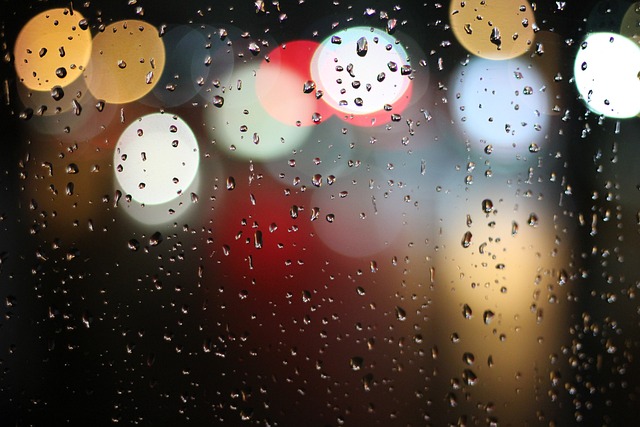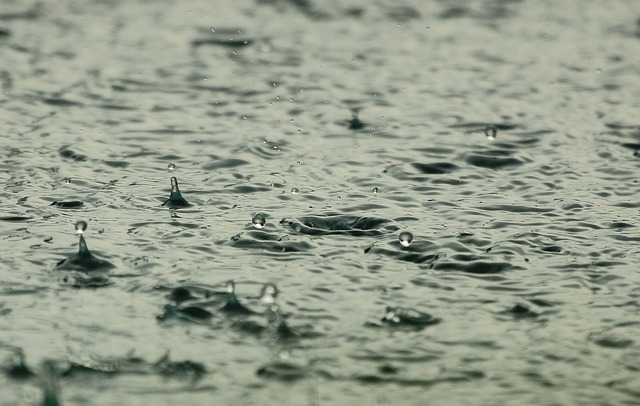One millimeter (mm) of Rain equals 1 liter of water per square meter.
Rain is a vital ecosystem component, crucial in sustaining agriculture and maintaining the environment’s health.
It provides the essential water needed for crops to grow, ensuring a bountiful harvest and food security.
Additionally, Rain replenishes groundwater supplies, nourishes rivers and lakes, helps maintain biodiversity, and supports the overall balance of ecosystems.
The measurement of rainfall is crucial in understanding and predicting weather patterns and assessing the Impact of climate change.
By quantifying rainfall, we can analyze its distribution, intensity, and duration, allowing us to make informed decisions regarding water management, farming practices, and environmental conservation.
How Much Is 1mm Of Rain? – Defining 1mm Rain

One millimeter (mm) of Rain refers to the precipitation measurement indicating that it would accumulate to a depth of 1 millimeter if collected over a particular area. This metric is used globally in meteorology to quantify rainfall.
To understand this better, envision a flat land surface exposed to rainfall. If 1 millimeter of Rain falls uniformly over this area and is then collected, it would form a layer of water 1 millimeter deep.
This depth is often likened to the thickness of a dime or a paperclip.
Scientifically, 1 mm of Rain is equivalent to 1 liter of water per square meter (or 0.001 cubic meters per square meter).
This relationship arises from the metric system where 1 liter of water spread evenly over an area of 1 square meter would form a layer 1 mm deep.
In essence, the measurement helps meteorologists and hydrologists assess and communicate rainfall intensity, aiding in flood prediction, water resource management, and weather analysis.
Impact of 1mm Rain on Different Sectors
While the Impact of 1mm of Rain might seem insignificant, it can have varying effects on different sectors, such as local climate, infrastructure, and land use.
Here’s a breakdown of the potential impacts on different sectors:
Agriculture:
Positive Impact: 1mm of Rain can provide a small amount of moisture to crops, helping to maintain soil moisture levels. This can be beneficial during dry spells, supporting crop growth.
A 1 mm rainfall, seemingly small, holds agricultural importance. It can enhance soil moisture, aiding crop growth during dry spells.
According to the Research of the Food and Agriculture Organization (FAO), 1mm of Rain can provide up to 0.1 liters of water per square meter of soil, benefiting plant health.
This modest boost in moisture helps sustain yields and resilience, contributing to stable food production in arid regions.
Negative Impact: In some cases, light Rain can cause soil erosion due to its intensity, especially if the soil has been left exposed due to recent farming activities.
If followed by heavy Rain, the erosive effect can be more significant.
For instance, on recently tilled fields, this Rain might loosen the soil, leading to runoff and erosion, potentially carrying away nutrient-rich topsoil crucial for crop productivity.
Water Supply:
Positive Impact: 1mm of Rain contributes to replenishing local water bodies like lakes, rivers, and reservoirs, albeit in a small way. This can help maintain a steady water supply for both domestic and industrial Use.
- Positive Impact on Domestic Use
- Reduced outdoor water usage due to rainwater irrigation can lead to lower water bills.
- Rainwater provides natural hydration to plants and lawns, supporting their health without additional irrigation.
- Rainfall reduces the need to tap into municipal water supplies, contributing to overall water conservation efforts.
- Rain refreshes outdoor spaces, enhancing the visual appeal of gardens, landscapes, and surroundings.
- Positive Impact on Industrial Use
- The light Rain cools the industrial machineries
- The light rainfall reduces the industrial water demand
- and minimizes the dust and particulate matter in industrial areas.
- Even a small amount of rainfall enhances the industry’s energy production.
Negative Impact: In urban areas with inadequate drainage systems, even a small amount of Rain can cause localized flooding and overwhelm stormwater systems, leading to waterlogging and infrastructure damage.
Economy:
Negative Impact: In regions heavily reliant on outdoor activities such as tourism or agriculture, a consistent pattern of light Rain might discourage visitors or damage crops. This can lead to economic losses for local businesses and communities.
Transportation:
Negative Impact
- Even 1mm of Rain can make roads slippery, reducing traction and increasing stopping distances for vehicles. This can contribute to accidents, particularly in areas where drivers are not accustomed to wet conditions.
- Rain often leads to slower traffic speeds as drivers exercise caution, potentially causing congestion and longer travel times.
- Rainwater can increase wear and tear on road surfaces, contributing to potholes, cracks, and overall deterioration of road infrastructure.
Construction:
Negative Impact: Rain can disrupt construction projects, especially if there’s inadequate protection for building materials and equipment. A small amount of Rain can delay work, affect the quality of concrete and other materials, and create safety hazards.
Energy:
Positive/Negative Impact: 1mm of Rain may not significantly impact energy generation, but in certain cases, it could affect renewable energy sources like solar power.
Cloud cover associated with Rain could lead to reduced solar energy production temporarily.
Ecology:
Rain, even in small amounts, can provide a bit of relief to ecosystems during dry periods. It can help to,
- recharge groundwater,
- nourish plants,
- and support various species.
Negative Impact: In urban areas, rainwater runoff can carry pollutants from roads and buildings into nearby water bodies, harming aquatic ecosystems.
Factors Influencing the Importance of 1mm of Rain
The importance of 1mm of Rain can vary depending on several factors. Here are some points explaining these factors and their influence:
Local Climate and Geography:
In arid regions, even a small amount of Rain, like 1mm, can be significant as it contributes to water availability. In contrast, in regions with frequent rainfall, 1mm might not significantly impact.
In the United Kingdom, areas with drier climates and lower annual rainfall typically need rainfall the most. One such locality is the region of East Anglia.
East Anglia is located in the eastern part of England and is known for having a relatively dry climate compared to other parts of the UK. It includes counties such as Norfolk, Suffolk, and parts of Cambridge Shire.
The region often experiences lower rainfall levels and is susceptible to drought conditions.
The city of Cambridge, for example, has an average annual rainfall of around 570mm, which is notably lower than the UK average of about 885mm.
Due to its drier climate, East Anglia faces challenges in maintaining water resources for agriculture, domestic Use, and maintaining ecosystems. Therefore, this locality can be considered as one that needs rainfall the most in the UK.
Urban Areas:
In cities, 1mm of Rain might not seem significant, but it can help cleanse surfaces, wash away pollutants, and mitigate heat in urban heat islands.
Water Scarcity:
In areas facing water scarcity, even a minimal amount of Rain can help recharge groundwater and provide relief to local water supplies.
The areas in the UK that generally have lower levels of groundwater are often associated with regions of higher elevation and less permeable geology.
One such area is the South East of England, particularly parts of the North and South Downs.
The Chalk aquifer in the South East of England, including areas like Kent, Surrey, and Sussex, often experiences lower groundwater levels due to its relatively low porosity and susceptibility to over-extraction.
This region is known for its drier climate and higher demand for water, which can lead to the depletion of groundwater resources.
For example, during periods of drought, such as the prolonged drought in the mid-2010s, these areas faced significant challenges in maintaining groundwater levels for domestic, agricultural, and environmental purposes.
To ensure sustainable water availability, efforts to manage and conserve groundwater resources are crucial in these regions.
Agriculture:
For farmers, 1mm of Rain can be crucial, especially during certain growth stages of crops. It can support germination, replenish soil moisture, and aid in overall plant health.
Ecosystem Health:
Even a small amount of Rain can help maintain ecosystem balance by supporting plant and animal life, particularly in fragile environments like deserts.
Rainwater Harvesting:
Some regions and communities practice rainwater harvesting. Even 1mm of Rain can contribute to their efforts in collecting and conserving water for various uses.
In the UK, rainwater harvesting is particularly important in areas with lower average annual rainfall and regions that experience water scarcity.
These areas can benefit from even small amounts of rainwater to supplement water resources. Some of the regions that might particularly value 1mm of rainwater for harvesting include:
- South East England: As mentioned earlier, parts of the South East, such as Kent, Surrey, and Sussex, have relatively lower average annual rainfall.
Rainwater harvesting systems can help alleviate pressure on water resources for non-potable uses like irrigation, toilet flushing, and laundry.
- East Anglia: This region, characterized by its drier climate, can greatly benefit from rainwater harvesting to conserve water and reduce demand for local water sources.
- London: Despite being a major urban center, London has faced water supply challenges. Rainwater harvesting can reduce the strain on the city’s water supply systems.
- South West England: Certain places in the South West, like parts of Cornwall and Devon, get less Rain than other areas. Collecting rainwater can offer an eco-friendly water supply for different needs.
Reservoir Levels:
In regions where water is stored in reservoirs for drinking water, irrigation, or power generation, 1mm of Rain can slightly contribute to maintaining reservoir levels.
Several regions in the UK have initiatives, regulations, and incentives for rainwater harvesting systems, given the importance of water resource management. Some notable examples include:
- London: The Greater London Authority promotes rainwater harvesting in various ways to reduce demand on the city’s water supply network.
Incentives and guidelines encourage businesses and homeowners to implement rainwater harvesting systems.
- Scotland: The Scottish government encourages sustainable water management, including rainwater harvesting, through initiatives like the Water Resource Management Plan.
This is particularly important in regions where water resources are sensitive to changing weather patterns.
- Wales: With an emphasis on sustainability and water efficiency, Wales has guidelines and resources available to promote rainwater harvesting and reuse, contributing to local water conservation efforts.
- South West England: Some areas in the South West have faced water scarcity issues. In response, rainwater harvesting has been promoted to alleviate pressure on local water supplies.
Flood Risk:
In areas prone to flooding, 1mm of Rain might not immediately cause flooding but can incrementally add to water accumulation and potentially increase flood risk.
Soil Erosion Prevention:
Even a small amount of Rain can help prevent soil erosion by compacting loose soil particles, protecting agricultural land, and preventing sediment runoff.
Drought Conditions:
During droughts, every drop of rain matters. 1mm might not break a drought, but it can signify the start of a shift in weather patterns.
Overall, the importance of 1mm of rain hinges on the specific context of the region, its water resources, and the activities and systems that rely on water.
While 1 mm might seem insignificant, it can play a role in various aspects of life and ecosystems, particularly in regions where water availability is a concern.
What is The Role of Rainfall Monitoring?

Rainfall monitoring plays a crucial role in various aspects of society, including agriculture, water resource management, climate research, and disaster preparedness.
By gathering and studying rainfall information, experts and decision-makers can make well-informed choices that greatly affect societies and the natural world.
- One of the primary roles of rainfall monitoring is in agricultural planning and management.
- Precipitation is a vital factor in crop growth, and monitoring rainfall helps farmers optimize irrigation schedules and ensure adequate water supply for crops.
- According to the Food and Agriculture Organization (FAO), accurate rainfall data can increase crop yields by up to 20% by enabling farmers to adapt their planting and harvesting practices to prevailing weather conditions.
- Furthermore, rainfall monitoring is crucial for water resource management. Assessing rainfall patterns and trends helps hydrologists and water managers determine water availability, plan reservoir operations, and allocate water resources effectively.
This information is particularly vital in regions facing water scarcity or prone to droughts.
- Additionally, rainfall monitoring contributes to climate research by providing climate modeling and prediction data.
Understanding long-term rainfall patterns helps scientists analyze climate change impacts, assess the vulnerability of ecosystems, and develop strategies for climate adaptation and mitigation.
- Rainfall monitoring also significantly affects disaster preparedness and early warning systems.
Meteorological agencies and disaster management organizations can issue timely alerts for potential flooding, landslides, or other weather-related hazards by monitoring rainfall in real-time.
This early warning system saves lives and allows communities to take necessary precautions and evacuate if needed.
In conclusion, rainfall monitoring is essential for agricultural planning, water resource management, climate research, and disaster preparedness.
Accurate rainfall data enables informed decision-making, promotes sustainable agriculture, ensures efficient water management, helps understand climate patterns, and enhances early warning systems.
The continued investment in rainfall monitoring infrastructure and technologies is vital for the well-being and resilience of communities worldwide.
FAQs
How much area does 1mm of rain cover?
1mm of Rain covers an area of 1 square meter with 1 liter of water.
Is 1mm of Rain a significant amount?
No, 1mm of Rain is considered very light and might not have a noticeable impact.
How long does it take for 1mm of Rain to fall?
Generally, it takes 5 minutes for 1mm of Rain to fall, and things will get wet. However, the time it takes for 1mm of Rain to fall can vary depending on the intensity of the rainfall. It might take 5 minutes to an hour.
Can you measure 1mm of Rain easily?
Yes, you can measure 1mmm of Rain with the high-precision rain gauge.
How does 1mm of Rain affect plants and soil?
1mm of Rain provides minimal moisture, which might not be sufficient for significant growth but can offer some relief to dry conditions.
Is 1mm of Rain enough to fill a container?
Yes, 1mm of Rain can fill a container with a base area of 1 square meter to a depth of 1mm.
Can 1mm of Rain cause flooding?
No, Generally, 1 mm of Rain is not enough to cause flooding; however, the Impact of Rain largely depends on the local geography and existing conditions.
How does 1mm of Rain compare to heavier rainfall?
Heavier rainfall, such as 10mm or more, significantly impacts replenishing water sources and affects the environment with more than 1mm of Rain.
Is 1mm of Rain the smallest measurable amount?
No, 1mm of Rain isn’t the smallest measurable amount. Some rain gauges can measure even smaller amounts, but 1 mm is a commonly used reference point due to its simplicity and significance.
Conclusion
Recognizing even the smallest amount of Rain, such as 1mm, is important as it signifies the presence of precipitation.
This indicates that the environment is receiving water, which is crucial for sustaining life and supporting various ecosystems.
Every drop counts and even a small amount of Rain can contribute to replenishing water sources, nourishing plants, and maintaining a balanced climate.
Monitoring and acknowledging these small amounts of rainfall help in understanding environmental patterns and water availability and, ultimately, ensuring the well-being of our planet.











